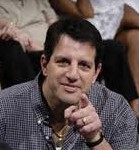 “A good compromise is one where both sides are unhappy.”
“A good compromise is one where both sides are unhappy.”
If you believe that quote, then you must be a fan of the current NBA early entry policy, one of the best compromises in sports history.
The policy, informally known as “One and Done,” was reached as a “split the baby” compromise between the NBA and the National Basketball Players Association in 2005. As the flow of high school players entering the NBA grew, the league pushed hard for an age limit of 20 before players could enter the league. The players did not want any age limit.
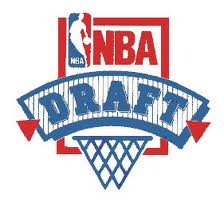 A compromise was reached prohibiting players from entering the league until they were one year removed from high school, which in most cases made them 19. This rule has forced all players to go to college (or some alternate spot, such as Emmanuel Mudiay playing this season in China) for at least one year. The number was picked because it was halfway between the positions of the sides, not for any real reason.
A compromise was reached prohibiting players from entering the league until they were one year removed from high school, which in most cases made them 19. This rule has forced all players to go to college (or some alternate spot, such as Emmanuel Mudiay playing this season in China) for at least one year. The number was picked because it was halfway between the positions of the sides, not for any real reason.
Now, superstar players complain that they are forced into the mockery of a one-year amateur career that costs them millions of dollars in lost wages. The NCAA complains that too many top players leave too quickly, causing all kinds of mayhem with the system. And the league complains that teams are forced into drafting relatively unknown players who are not ready for the big time, causing uncertainty and risk to their teams.
Each group supports their claims with anecdotal stories about this guy or that guy. Players will say, “What about LeBron James, Kobe Bryant and Kevin Garnett?” They all came to the league directly from high school and became the brightest stars in the game. The NCAA will point out that Lenny Cooke, Taj McDavid and DeAngelo Collins skipped college for the lure of NBA riches, only to end up undrafted and missing out on a free college education. The league will counter with Kwame Brown, Darius Miles and Robert Swift. They claim teams spent millions on busts who should have gone to college and developed more as players, minimizing the risks to teams.
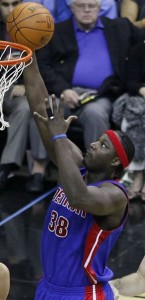 Each side is correct from their point of view. But these stories only demonstrate the danger of trying to prove a point with anecdotal evidence. Every story has a counter argument that is yet another point of view.
Each side is correct from their point of view. But these stories only demonstrate the danger of trying to prove a point with anecdotal evidence. Every story has a counter argument that is yet another point of view.
For example, look at Kwame Brown. Was his crime entering the draft too young, or being chosen No. 1 overall by a bad drafter? At the time, his selection as the top pick in the draft was universally panned by experts. If he was the 15th pick as perhaps he should have been, he might now be considered a success story rather than the poster boy for a draft bust. After all, he did earn $64 million in his career. Teams kept re-signing him for 12 years. Is he a bust, or a success?
With an issue this important and the “evidence” so arbitrary, I decided to complete a thorough data-based study with my firm, Intensity Corporation. We tracked the career results of over 1,400 players who entered the draft beginning in 1998. By analyzing the draft selection and career outcome of each player, many things became clear.
This is Part One of a three-part series. Today I will discuss the history of the current policy and the arguments of the three main sides. Part Two will explain what the data show about the system and discuss the results. Part Three will wrap up the discussion with a series of recommendations that can create a win-win-win situation for all the parties involved. With the NBA’s Collective Bargaining Agreement likely to be open for negotiation in 2017, now is the time to really understand how to create a better system for all.
So what’s the real problem with the current “One and Done” policy? Why does everyone hate it so much? The short answer is that the players, the NBA and the NCAA all have opposing needs. There are many competing interests and dozens of different situations trying to work into a one-size-fits-all system loaded with perverse incentives.
Wow, that’s a mouthful. What the hell does all that mean?
The primary goal of most star players is to make as much money as possible. The main path to big money is the NBA. The primary goal of the NCAA is to have star players stay in the college system as long as possible. The players provide the star power while working for free. The NBA wants as much certainty as possible. The longer players develop, create a fan base and demonstrate pro skills with no effort, cost or risk to the NBA, the better.
So the players benefit the most by entering the league as soon as possible. They get paid sooner, enter free agency sooner and develop faster. The downside is that if they enter the draft before they are ready, they risk getting picked low (or not at all). If they miss their shot, an opportunity may not come again. Remember, next year’s draft will bring a whole new group of players. It is much harder to start over if you screw it up the first time.
The NCAA’s position is simple. It generates billions of dollars with essentially free labor. Everyone in the system gets paid except the players. The longer players stay in the system, the better it is for the schools, the coaches and the fans. The only issue, of course, is the free labor part. It is important to note that currently the NCAA has no direct role in the NBA’s age limit decision. The rule is an agreement between the league and union through collective bargaining. But more on that later.
While the league thrives on young stars, its biggest desire as businesspeople is certainty. The draft process has always 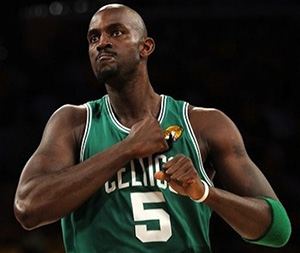 been about picking potential. Many teams believe that drafting 18-year-olds is really risky. While all teams want to choose future stars, uncertainty is a bad thing. Older rookies are in theory more mature, more polished, more ready for the NBA. The key part is “in theory.” After all, many people believe players develop faster, mature more and become NBA-ready by playing in the NBA rather than college. After all, Kevin Garnett and Kobe Bryant made all of their rookie mistakes when they were 18 and 19, not when they were 21 and 22. Their teams got two more years of production that they otherwise would not have.
been about picking potential. Many teams believe that drafting 18-year-olds is really risky. While all teams want to choose future stars, uncertainty is a bad thing. Older rookies are in theory more mature, more polished, more ready for the NBA. The key part is “in theory.” After all, many people believe players develop faster, mature more and become NBA-ready by playing in the NBA rather than college. After all, Kevin Garnett and Kobe Bryant made all of their rookie mistakes when they were 18 and 19, not when they were 21 and 22. Their teams got two more years of production that they otherwise would not have.
It’s easy to see that all of these competing factors make for a wide range of potential situations. After all, everyone knew that LeBron James was a game changer when he was as young as 16 years old. I remember Moses Malone was asked if he regretted not going to college. He said that if knew the pros was this much fun he would have entered the draft in junior high school.
But other players may not be as ready. The road to stardom is littered with those who leave college too early and fail, isn’t it? College basketball is a disaster, isn’t it? Even Commissioner Adam Silver stated that basketball as a whole would be better served if players didn’t enter the NBA until they were 20. While that sounds reasonable in general, the cost is that individual players would have to forgo millions of dollars in earnings. No one can argue that James wasn’t ready at 18.
So is this where the whole perverse incentives thing comes into play? Yup.
Here’s the big problem. The current One and Done policy only has one incentive built into it, and it practically forces players to do the one thing that the NBA and the NCAA don’t want them to do: leave college early. As a matter of fact, the incentive is so strong, the only solution they can think of is to ban players from taking it.
Players want to make money. The NCAA prohibits them from doing so. The NBA is a giant fire hose of money pouring out everywhere. But the players have only one option from which to choose. Stay in college for free or go to the NBA and probably make more in a year than they would their entire lives working a conventional job. All other considerations mean virtually nothing.
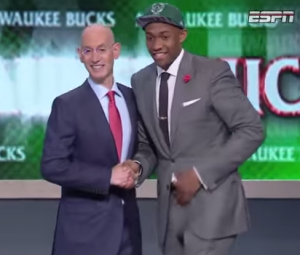 The Supreme Court has ruled that any restriction on earning a living can only be considered legal if agreed to in collective bargaining. The league is the employer and the players have a union, so making a rule is doable. The league and union can sit down and negotiate. The league has been very clear what it wants as a business practice. The union will be creating a policy for its members to follow.
The Supreme Court has ruled that any restriction on earning a living can only be considered legal if agreed to in collective bargaining. The league is the employer and the players have a union, so making a rule is doable. The league and union can sit down and negotiate. The league has been very clear what it wants as a business practice. The union will be creating a policy for its members to follow.
It does it all the time. Examples include the draft, the maximum salary and the escrow system. These are all examples of the union agreeing to a policy that somehow limits individual player compensation as part of the greater good of the entire membership and the game itself.
What makes this situation different is that technically, neither the league nor the union actually represents any of these affected players. The age restriction only is in place for high school or college age players. And as odd as it seems, the agreement would merely create a barrier to entry to the NBA, so the NCAA isn’t even part of the negotiation.
So where does the issue of fairness enter into it? What gives two groups who don’t represent these players the right to create a rule that will prohibit young players from making millions of dollars? While Mark Cuban is correct that LeBron will still be LeBron at 21, he probably made over $50 million by then, between salary and endorsements. Luckily for him, he didn’t suffer a career-ending injury before entering the league.
Enough of the arguments, opinions, and anecdotes. What does the data actually say? We studied the results and career outcomes of 1,417 players who declared early entry into the draft between 1998 and 2014, were chosen during those drafts, or received an NBA salary after completing their college eligibility. We wanted to know how the results differed before and after One and Done. Did staying in school longer help players get better? Or did they stagnate compared to their pro counterparts? Will a player earn more by entering the draft early? Or will added seasoning raise his draft position, creating higher earnings over his career? Are teams better at drafting since One and Done? Do they draft better with older players who have more history?
And the biggest question of all: What age should be considered the “sweet spot”? What is the best compromise age for entry into the draft?
For all of the results, you have to read Part Two tomorrow.
Danny Schayes is a Director of Business Optimization at Intensity and a leader in the business of professional sports. Schayes frequently advises sports organizations in complex business matters that include contract negotiations, pricing strategy, marketing optimization, and executive leadership. Follow him on Twitter.
MORE COLUMNS FROM DANNY SCHAYES